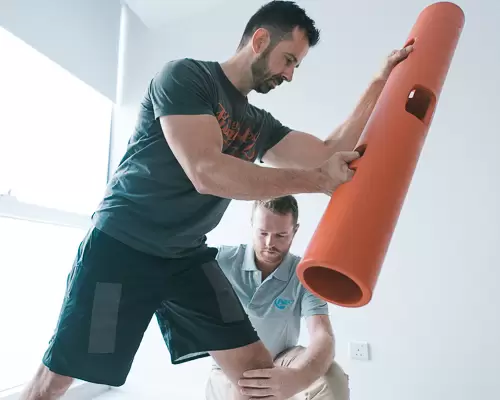Related Posts
Stay Active, Live Longer: How Exercise Can Boost Your Health After 60
As we get older, staying active becomes more important than ever. Exercise isn’t just about feeling good today it can extend your life, improve your independence, and keep you feeling strong well into your 70s, 80s, and beyond.
Chronic Fatigue and Muscle Strains – they’re not related….are they?
Find out how physiotherapy can help combat chronic fatigue according to research by Johns Hopkins University.
How Gait Analysis Can Benefit Runners
Gait Analysis is an in-depth analysis of how you move, more specifically running and walking with the ultimate goal of identifying any mechanical issues or potential risk factors for injury in a runner’s stride.
Optimizing Performance: Training cycles – Part 1

Continuing on from our recent post about optimizing performance, this 3-part piece focuses on the role of training cycles in elite performance, from the viewpoint of our Personal Trainer and Rehab expert Paul McBride – himself a former football professional.
Training cycles
The development of a football player and the preparation of a team are vital when preparing for a major event such as the world cup. To achieve the objectives that have been set, there needs to be a series of steps that have been scheduled by coaching staff/ strength and conditioning coaches as part of an overall plan. This is known as a training plan/cycle. Within the training plan, we focus on hitting objectives while implementing a set of increasingly detailed procedures with the aim of reaching these desired objectives in time for sporting performance. The planning of a team’s training is an essential task for any coach, as they need to ensure that the players progress, their performance abilities develop, and that they are prepared both individually and as a team for competitive action. This is just as much a task for top-level coaches as it is for amateur and youth coaches.
Why do we plan?
To decide, after analysis, on the choice of objectives to be achieved, both for short and long-term goals
To help ensure a better weighting of the elements covered in the training, in terms of quantity, intensity and quality.
To prevent improvisation in training work.
to avoid repetitive overload
To allow better monitoring of training
To allow the coach to respect and monitor the biological, physiological and psychological factors that determine performance.
Coaches must plan their training methods on the age of the players, their level of development, the category of competition in which they are playing and the fixture list for the competitions in which they are involved in. However, such planning is not easy to schedule, especially in a team sport like football, where players can be involved in multiple competitions such as their domestic league, cup competitions, international club competitions and international competitions. The need for high-quality, methodical planning is hugely important and calls for close co-operation between every individual involved including the coach, doctor, dietician, physiotherapist and the psychologist.
An annual training plan for the season should be created on the basis for all scheduled training activity which will be performed. A coach’s first task is to draw up this plan before a new season gets underway. This plan will vary from country to country, either because of the structure of their fixture list of the competitions, or because of cultural, weather and even financial considerations. The plan varies depending upon the level of athletes you are working with.
Criteria to be considered when designing an annual training plan:
Playing level,
performance age
training age
The number of players (squad size)
fixture list
objectives for performance on the pitch for the season
The infrastructure, equipment and conditions available for training days
Analysis and assessment of past performances
Additional criteria to be considered:
− Sports medical tests
− Inclusion of preparation or recovery period
− The social environment of the players (family, place of residence, school, work, lifestyle habits, etc.) The annual training plan is often subdivided into two or three large cycles (macrocycles), lasting four to six months each, depending on the duration of the annual training plan.